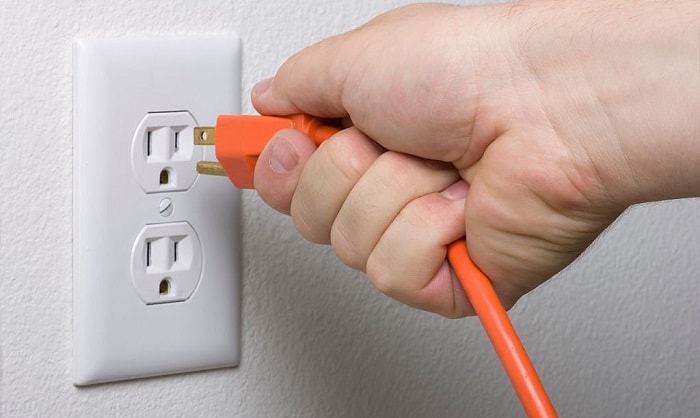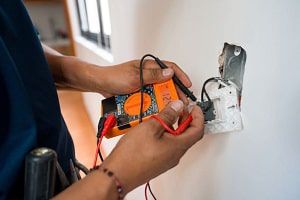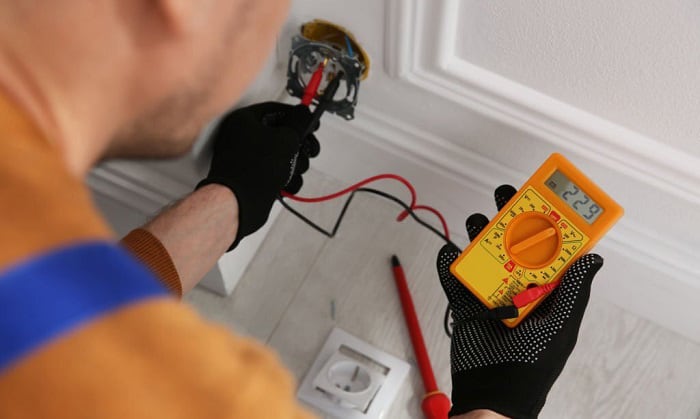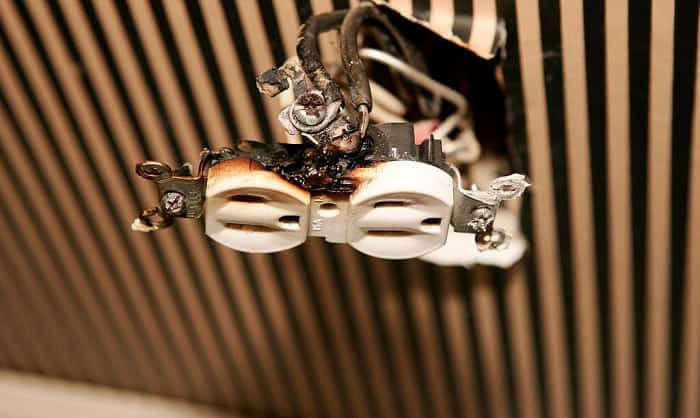To avoid overloading the circuit, you must be aware of the power capacity of the outlets in your home or building. If you’re unsure about “how many watts can an outlet handle?” there are a couple of factors to consider, such as the circuit breaker and the voltage rating of the circuit.
The stated maximum load for an outlet or circuit is 1500 watts, still, understanding these factors is essential for the safe usage of the circuit. Read on to learn about outlet capacity and the danger of overloading a circuit.
Table of Contents
How Many Watts Does an Outlet Put Out?
Circuit overloads happen when we plug in electronic devices that require more power than an outlet can handle. You can prevent this problem by knowing the maximum watts of a wall outlet, which can depend on factors like circuit breaker use and voltage rating.
Here’s how these factors can affect the outlet power ratings and a calculation guide to know how many watts can a wall outlet handle.
Factors that Affect Wattage
1. Circuit Breaker Size Used
We all know that a circuit breaker provides safety for a circuit. Aside from this, it also tells how much power supply the circuit can provide.
In general, considering how many amps the breaker is will be the first factor affecting an outlet’s watts rating. This also means that the higher circuit breaker rating can handle more wattage.
You may not be able to use the total capacity of a circuit breaker due to some safety issues.
Based on NEC standards, we are only allowed to use 80% of the total capacity of the circuit breaker. This is the safety allowance to prevent an electrical problem, especially if the circuit needs to be for the long run.
Anything you connect in a circuit that exceeds the 80% power rating of the breaker may result in sudden tripping of the circuit breaker due to circuit overloads.
2. Voltage Rating of the Outlet
A circuit’s voltage rating also directly affects an outlet’s wattage rating. An outlet’s wattage rating may vary depending on the voltage rating used in a circuit. For example, a 110 outlet handle the general household electronics wattage.
However, aside from the standard 110 volts outlet, we also have a 240v outlet to handle high-wattage electronics such as ovens, air conditioning, and water heater.
This also means that the higher the power supply voltage, the higher the electronic wattage it can hold.
How to Calculate
To calculate the total outlet wattage, you must use the formula
\begin{equation}
\text{Outlet Wattage} = \text{Breaker Amps} \times \text{Voltage}
\end{equation}
This simply means you can get the total wattage of an outlet by multiplying the breaker size considering the 80% allowable rating to its supply voltage rating.
Therefore, using a 20 amp circuit breaker in a 110v outlet will be a total wattage rating of 1,760 watts. However, this total wattage may differ depending on how many volts the power supply is.
Below is the chart containing the total wattage of an outlet of the most common circuit breaker size and voltage supply rating of the typical residential house used. You can use it to determine how many watts can an outlet take in your home.
| Supply Voltage (volts) | Circuit Breaker Size (amps) | Outlet Total wattage (watts) |
| 110V | 15 amps | 1,320 watts |
| 110V | 20 amps | 1,760 watts |
| 110V | 30 amps | 2,640 watts |
| 120V | 15 amps | 1,440 watts |
| 120V | 20 amps | 1,920 watts |
| 120V | 30 amps | 2,880 watts |
| 220V | 15 amps | 2,640 watts |
| 220V | 20 amps | 3,520 watts |
| 220V | 30 amps | 5,280 watts |
| 240V | 15 amps | 2,880 watts |
| 240V | 20 amps | 3,840 watts |
| 240V | 30 amps | 5,760 watts |
Is Socket Handling the Same in Different Countries?
Different countries may have differences when it comes to a standard outlet handle. As a result, they also have differences in handling their home electrical system and appliances’ voltage rating.
It is important to be aware of the voltage rating of an electrical outlet when using devices in different countries. Using devices not designed for different voltages can cause damage to devices, electrical shock, or other safety hazards.
Therefore, if you love to travel to different countries, it is always recommended to use appropriate voltage converters and adapters. Below is the chart that will give you an idea of what standard watts per outlet of different countries so you can use your electronics efficiently and safely.
| Country | Standard Voltage Rating |
| US | 110v – 120v |
| UK | 230v |
| Vietnam | 220v |
| Spain | 230v |
| Ghana | 230v |
| Argentina | 230v |
| Bermuda | 120v |
| Germany | 230v |
| South Korea | 220v |
| New Zealand | 230v |
| Uruguay | 220v |
What Happens if an Outlet Over Its Capacity?
If you plug in a device with more power than an outlet can handle, you might overload the circuit. Here’s what can happen:
The Circuit Breaker will Trip
The circuit breaker’s job is to regulate the electricity flowing through the entire circuit. Therefore, if you accidentally overload a circuit by plugging in a device that exceeds its power rating, it will immediately trip to prevent larger electrical damage.
The Electrical Wiring may Overheat
Overloading an outlet can also cause the electrical wiring in the wall to overheat. This can cause the insulation around the wires to melt or burn, creating a serious fire hazard. Overheating can also damage the electrical wires, leading to a loss of power or even electrical shock.
Frequently Ask Questions
What are the Signs of an Overloaded Outlet?
An overloaded outlet can be a serious electrical hazard that can lead to fire, electrocution, and other safety hazards. Here are some signs to look for that your Outlet may be overloaded.
- Frequently tripping the circuit breaker
- Notice a buzzing sound inside the wall or Outlet.
- The Outlet is too hot, or there is a burning smell.
- Sudden shutting down of the currently plugged electronic device.
How Many Power Strips or Surge Protectors can You Use in One Outlet?
Using only one power strip or surge protector at a time would be best to avoid circuit overload and make your electronic work effective. Furthermore, daisy chaining multiple extension cords and surge protectors can violate the standards of NEC and OSHA regulations and may result in appropriate penalties.
Related post: How many things can you plug into one outlet?
How Frequent Should You Replace an Outlet?
The normal lifespan of an outlet is 15 to 25 years. Nevertheless, it is crucial to replace them when you detect any early indications of damage, such as physical damage, burn marks, or loose connections. Doing so can avoid significant damage that may result in costly repairs.
Conclusion
Knowing how many watts can an outlet handle is essential to maintaining safety and a functional electrical circuit. By understanding the power rating of your outlets, you can prevent overloading the chow many watts an outlet handleircuit, which can lead to a more significant electrical hazard.
Remember to always check the power requirements of your electrical device before plugging them into an outlet, especially if you go to other countries. This way, you can ensure that your electronic device works properly and safely while traveling abroad.

I am Edwin Jones, in charge of designing content for Galvinpower. I aspire to use my experiences in marketing to create reliable and necessary information to help our readers. It has been fun to work with Andrew and apply his incredible knowledge to our content.







